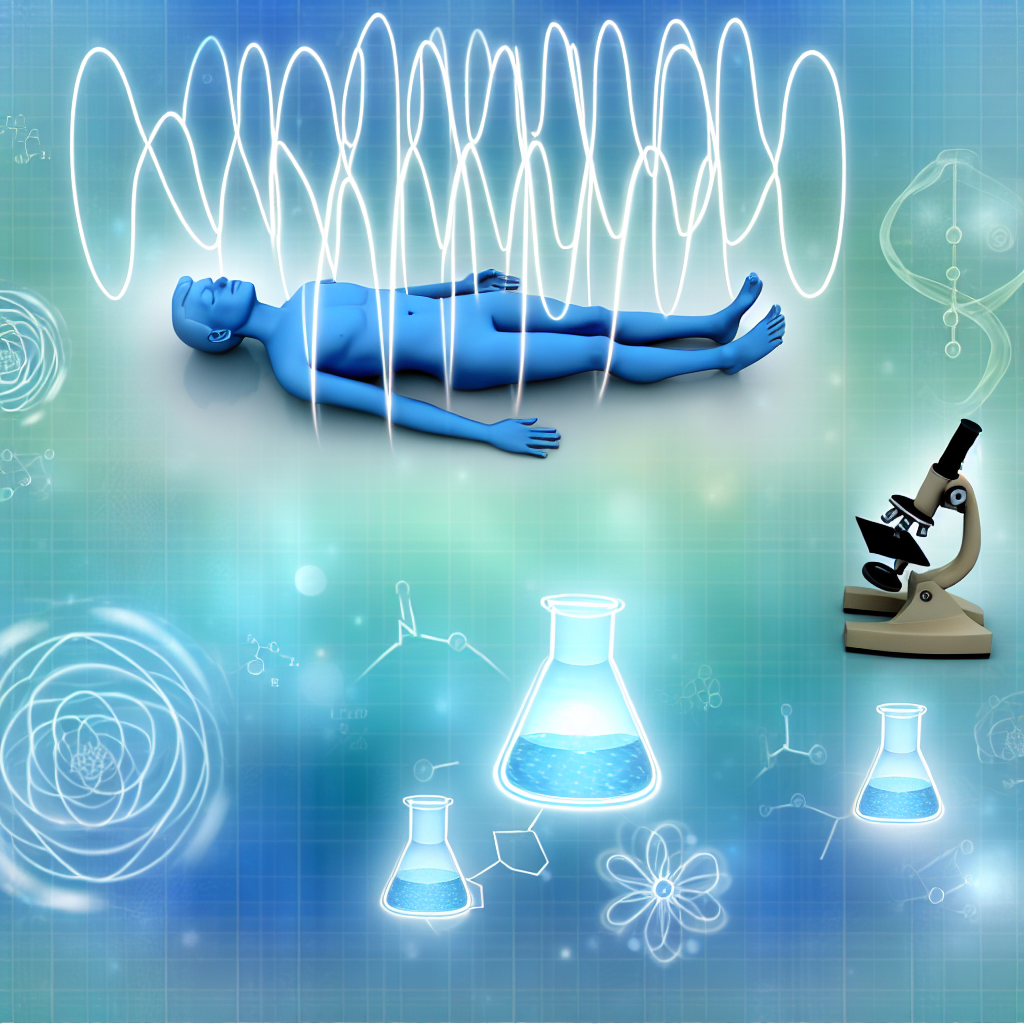Electromagnetic Therapy: Scientific Evidence
Introduction: Is Electromagnetic Therapy the Future of Natural Healing?
In the modern quest for holistic healing and natural remedies, electromagnetic therapy has emerged as a fascinating field of study. Often referred to as Pulsed Electromagnetic Field (PEMF) therapy, this treatment modality utilizes electromagnetic fields to influence the body’s natural healing processes. By harnessing low-frequency electromagnetic waves, proponents believe that PEMF therapy can help reduce inflammation, relieve pain, and promote overall well-being. But how much of this is backed by science?
Electromagnetic therapy is not a new concept. It has historical roots dating back to the early 20th century when Nikola Tesla and other pioneers explored the potential of electromagnetic fields in medical treatments. Over the years, the theory has evolved, with modern devices designed to stimulate cellular repair, improve circulation, and enhance neurological function. The widespread use of this therapy has grown significantly, especially as alternative medicine and integrative health approaches gain popularity.
A key principle underlying electromagnetic therapy is the interaction between electromagnetic fields and the human body. Our bodies naturally generate bioelectrical signals that regulate cellular function, nerve activity, and overall physiological balance. When these bioelectrical signals become disrupted—whether due to injury, stress, or disease—electromagnetic therapy proponents argue that externally applied fields can help restore cellular communication and accelerate the healing process.
Scientific interest in electromagnetic therapy has led to various clinical studies and investigations. Researchers have examined its effects on conditions such as chronic pain, arthritis, bone healing, and neurological disorders like Parkinson’s disease or depression. Additionally, the FDA has approved certain electromagnetic therapy devices, particularly for the treatment of bone fractures that do not heal properly. While there is growing evidence supporting some applications, skepticism remains within the medical community due to inconsistencies in results and the need for further large-scale studies.
Despite ongoing debates, many individuals report positive outcomes with electromagnetic therapy, leading practitioners in alternative medicine to adopt it as part of their treatment protocols. As the scientific community continues to explore its potential, a better understanding of its mechanisms and effectiveness will shape the future of this intriguing approach to natural healing.
Scientific Evidence and Studies: What Does the Research Say?
Scientific studies and clinical trials have been conducted to explore the efficacy of electromagnetic therapy for various health conditions. Some of the most compelling evidence comes from bone healing, chronic pain management, and neurological disorders.
Electromagnetic Therapy for Bone Healing and Regeneration
One of the most well-documented applications of electromagnetic therapy is its role in bone healing. The U.S. Food and Drug Administration (FDA) has approved Pulsed Electromagnetic Field (PEMF) devices for treating nonunion fractures—bone breaks that fail to heal. Research published in *The Journal of Orthopaedic Research* found that PEMF stimulation significantly increases bone formation and enhances the body’s natural repair mechanisms.
A study published in *Bioelectromagnetics* evaluated the effects of electromagnetic fields on patients undergoing spinal fusion surgery. Results showed that patients treated with electromagnetic therapy experienced faster fusion and improved outcomes compared to those who did not receive the treatment.
Can Electromagnetic Therapy Reduce Chronic Pain and Inflammation?
Electromagnetic therapy has also been investigated for its role in reducing chronic pain. A study published in *Pain Research & Management* demonstrated that PEMF therapy significantly reduced pain levels in patients with osteoarthritis, likely due to its anti-inflammatory effects.
In another study published in *The Clinical Journal of Pain*, researchers examined PEMF’s impact on fibromyalgia patients. Participants reported lower pain perception and improved quality of life after consistent exposure to electromagnetic therapy.
Electromagnetic Therapy for Neurological Disorders and Mental Health
Recent research has also explored the potential benefits of electromagnetic therapy for neurological conditions such as depression, Parkinson’s disease, and multiple sclerosis. A notable study in *The Journal of Affective Disorders* found that repetitive Transcranial Magnetic Stimulation (rTMS), a form of electromagnetic therapy, effectively reduced depressive symptoms in patients with treatment-resistant depression.
Furthermore, a systematic review published in *Neuroscience Letters* suggested that PEMF therapy may have neuroprotective effects in patients with neurodegenerative diseases. Researchers concluded that its influence on neural activity may help improve mobility and cognitive function in individuals with conditions such as Parkinson’s disease.
Although these findings are promising, scientists urge caution. While substantial evidence supports the efficacy of electromagnetic therapy in specific cases, larger clinical trials are needed to standardize treatment protocols and confirm long-term safety.
Conclusion: Is Electromagnetic Therapy the Next Breakthrough in Medicine?
Electromagnetic therapy stands at the intersection of modern science and holistic medicine. While critics argue that more rigorous research is necessary, existing studies highlight its potential benefits for bone healing, chronic pain management, and even neurological disorders. The FDA’s approval of PEMF for certain medical conditions suggests that electromagnetic therapy holds promise, though further research is needed to expand its applications confidently.
For individuals seeking alternative treatments, electromagnetic therapy represents an exciting avenue worth exploring, particularly for those suffering from chronic pain or slow-healing injuries. However, it is essential to consult healthcare professionals before incorporating it into a treatment regimen. As advancements in bioelectromagnetic research continue, the future of electromagnetic therapy may provide even greater insights into its role in natural healing and medical innovation.
References
1. *The Journal of Orthopaedic Research*. “Effect of Pulsed Electromagnetic Fields on Bone Healing.”
2. *Bioelectromagnetics*. “Spinal Fusion and Electromagnetic Therapy.”
3. *Pain Research & Management*. “PEMF and Osteoarthritis Pain Reduction.”
4. *The Clinical Journal of Pain*. “Fibromyalgia and PEMF Therapy.”
5. *The Journal of Affective Disorders*. “Electromagnetic Therapy for Depression.”
6. *Neuroscience Letters*. “Neuroprotective Effects of PEMF Therapy.”
Concise Summary:
Electromagnetic therapy, also known as Pulsed Electromagnetic Field (PEMF) therapy, is a fascinating field of study that utilizes electromagnetic fields to influence the body’s natural healing processes. While it has historical roots dating back to the early 20th century, modern research has explored its potential benefits for bone healing, chronic pain management, and even neurological disorders. The FDA has approved certain PEMF devices, and many individuals report positive outcomes, leading to its adoption in alternative medicine. However, the scientific community continues to debate the need for larger clinical trials to standardize treatment protocols and confirm long-term safety. As advancements in bioelectromagnetic research continue, the future of electromagnetic therapy may provide greater insights into its role in natural healing and medical innovation.

Dominic E. is a passionate filmmaker navigating the exciting intersection of art and science. By day, he delves into the complexities of the human body as a full-time medical writer, meticulously translating intricate medical concepts into accessible and engaging narratives. By night, he explores the boundless realm of cinematic storytelling, crafting narratives that evoke emotion and challenge perspectives.
Film Student and Full-time Medical Writer for ContentVendor.com




